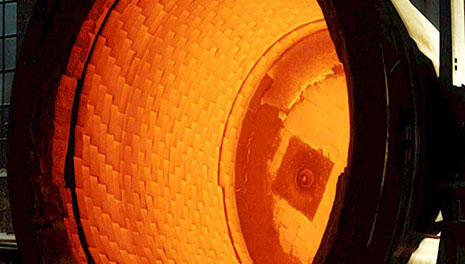Grinding of refractory raw materials

Crushing is an essential process in the refractory industry. The raw materials delivered to the factory range from powder to about 350mm, most of which are blocks over 25mm. The crushing process and raw material selection in the factory are the key to the production of high-quality products, which have a direct impact on the properties of the product. In addition, from the point of view of cost accounting, the power consumed by crushing and crushing equipment accounts for a large proportion. In order to save energy and reduce costs, attention must be paid to the crushed process.
The essence of the crushing process is related to the following factors, that is, overcoming the surface tension of the material’s surface particles and overcoming the Coulomb attraction between the material’s internal particles. Starting from the basic concept of the silicate physical and chemical dispersion system, it is not difficult to see that the particles of the crushed material are still very large when they are first crushed, so the surface and surface energy of the particles are small. , It is difficult to crush the material below 1μm (micron), the smaller the particle, the higher the surface energy, so when finely crushing, more energy will be consumed to overcome the surface energy. In addition, during fine grinding, due to the accelerated thermal movement of particles, the collision probability of particles increases, and coalescence and coagulation may also occur. Therefore, the crushing process must be organized correctly, and the crushing method and equipment should be selected according to the degree of dispersion of the final product.
The purpose of crushing:
(1) Crushing is an important operation link in the beneficiation process. When separating and enriching particles of the same component from raw ore aggregated by two or more different minerals, the raw ore should be crushed first in order to distinguish by type.
(2) In order to promote the interaction between the various phases, or evenly disperse the solid particles into the liquid, for example, prepare mud.
(3) Prepare various particle sizes according to process requirements. Increase the lattice defects and specific surface of the material, accelerate the physical and chemical reactions, and promote sintering.
The crushing methods can be roughly divided into the following four types: extrusion, impact, grinding and splitting. The function of various crushing machines is a combination of the above methods.
Crushing is divided into dry crushing and wet crushing. Wet crushing is mostly used in the production of ceramics or special refractory materials. Compared with dry crushing, it has the following advantages:
(1) The crushing ratio is large, and the particle size of the crushed material is small;
(2) The crushing efficiency is high, and the phenomenon of “powder wall” during dry crushing is not easy to occur (but when the particle size of the crushed product is less than 0.01mm, powder aggregation will also occur);
(3) The friction loss of equipment and grinding body is small;
(4) Good dust prevention, which is conducive to civilized production and process automation.
In addition, there are low-temperature crushing, dry crushing, and self-generating crushing based on the impact and friction of crushed materials, which are classified according to the crushing medium.
When crushing raw materials, the volume density and strength index of the material are of great significance to the selection of crushing equipment and the analysis of crushing efficiency.
